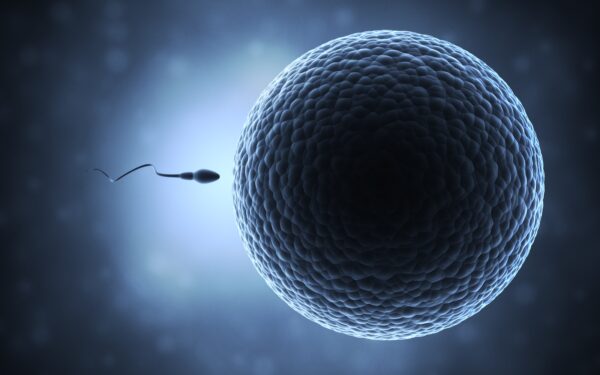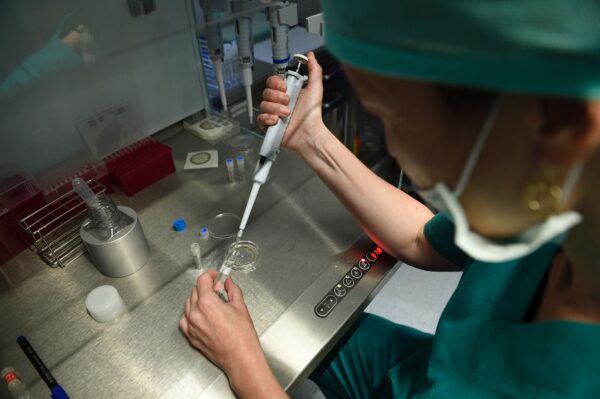New Research May Produce Non-Hormonal Male Contraceptive
Research fromthe University of Newcastle and the Hunter Medical Research Institute (HMRI) may help create non-hormonal male contraceptives and offer insights into fertility and overall health.
HMRI researcher and Postdoctoral Research Fellow at Newcastle University, David Skerrett-Byrne PhD, has, for the first time, profiled 6000 sperm proteins.
Skerrett-Byrne said in an HMRI news release that he was able to profile these proteins using a process called phosphorylation, which activates or deactivates a protein.
“Identifying these proteins and then taking them through a process of phosphorylation helps us understand the process that switches proteins on and off,” he said.
“The potential for this is that we could eventually use drugs to target specific proteins and maybe even create a non-hormonal male contraceptive.”
Non-hormonal male birth control is an important step forward in the field of male contraceptives because it does not have the limitations or side effects of other forms of birth control.

Currently Used Male Contraceptives
At the moment, there are only two effective forms of male birth control, vasectomies and condoms, which both have their limitations. Condoms are single-use and only 98 percent effective when used properly, meaning that out of 100 people, two will get pregnant annually, while vasectomies are regarded as a permanent form of sterilisation. Although there are reversal procedures for vasectomies, they are expensive and not always successful.
Male hormonal birth control, targeting testosterone, has also been attempted but isn’t commonly used due to side effects such as depression, weight gain, and an increase in low-density LDL cholesterol levels. Therefore, an effective non-hormonal form of male birth control would be a significant advancement in the field of contraceptives.
However, this is not the first study to perform research on a non-hormonal male contraceptive. For example, a study from 2020 that used mice as the subject matter found that, eliminating the RAR-α (retinoic acid receptor alpha) protein achieves effective and reversible sterilisation with no apparent side effects.
Accordingly, in March of 2022, scientists presented research at a meeting of the American Chemical Society, which demonstrated the contraceptive efficacy of a compound called YCT529. YCT529 inhibits the RAR-α (retinoic acid receptor alpha) protein and, when administered to mice orally for four weeks, reduces sperm counts to achieve 99 percent efficacy in preventing pregnancy. Furthermore, when taken off YCT529 for four-six weeks, the mice could procreate again.
YCT529 is also less likely to have side effects because it inhibits other retinoic acid receptors 500 times less than it inhibits RAR-α; however, the compound has yet to go through human trials.
Male Infertility Crisis
This new research also builds on the HMRI and Newcastle University’s work to identify the causes of the ongoing male infertility crisis.
The male infertility crisis refers to the globally experienced reduction in sperm counts, where over the last 4o years, global sperm counts have halved, and 1 in 20 men have faced a decrease in fertility. Potential causes for this crisis include rises in obesity, endocrine disruptors such as plasticisers, and the trend of delayed parenthood.
The most common plasticizers (plasticisers) include esters such as adipates, azelates, citrates, benzoates, ortho-phthalates, terephthalates, sebacates, and trimellitates, according to Plasticisers.org.
This study mapped the protein composition of immature and mature sperm proteins, establishing the changes that occur after the sperm leaves the testes.
“Sperm is the only cell in the human body that can’t read its own DNA and create proteins,” Skerrett-Byrne said.
Thus, the protein-altering processes that sperm sustains along its travel from the testes to the egg is an essential part of fertility.
Skerret-Byrne said that fertility knowledge could be enhanced by understanding the serious changes that sperm undergo as they travel through the epididymis—the tube connecting the testes to the vas deferens.
He said that of the primary changes that occur in the epididymis, a substantive remodelling of the sperm architecture, the scale of which has yet to be fully resolved, is critical.
The study also observed that transit through the epididymis significantly changed the abundance of 889 sperm proteins within sperm cells. Furthermore, the data indicated that the reduction in the protein set within the sperm cells corresponded with the enhancement of several key fertility processes. These processes included sperm motility, capacitation, and penetration of the thick extracellular matrix surrounding mammalian eggs.
“We envision the most immediate clinical impact of this work will be on the detection of defects in sperm maturation causally associated with male infertility,” Skerrett-Byrne said.

The Relationship Between Reproductive and Overall Health
Additionally, Skerrett-Byrne said that poor semen parameters could be used as an early indicator of potential danger, signalling the onset of various diseases and medical conditions outside of infertility.
The potential for sperm quality to be a useful overall health indicator is strengthened by the work of another HMRI researcher, Elizabeth Bromfield. Bromfield identified a signature of cell damage that connects sperm quality to a number of diseases such as the autoimmune diseases diabetes, cardiovascular, metabolic, oncological, and urogenital.
“Infertility is the canary in the coal mine. It’s one of the first things to be affected if there is a problem with environmental stress,” said Bromfield.
Bromfield said that fertility is not just about men’s capacity to conceive as there are two decades of research which suggests that men with below normal fertility die younger and live less healthy years.
“It’s also about their overall mortality,” she said.
“What we would like to see happening is IVF clinicians directing patients towards in-depth health checks and lifestyle interventions when men aged 25 – 40 years of age are presenting with poor sperm quality.”
Skerrett-Byrne said that the protein resources provided by this study might find application in predicting an an individual’s long-term health.





